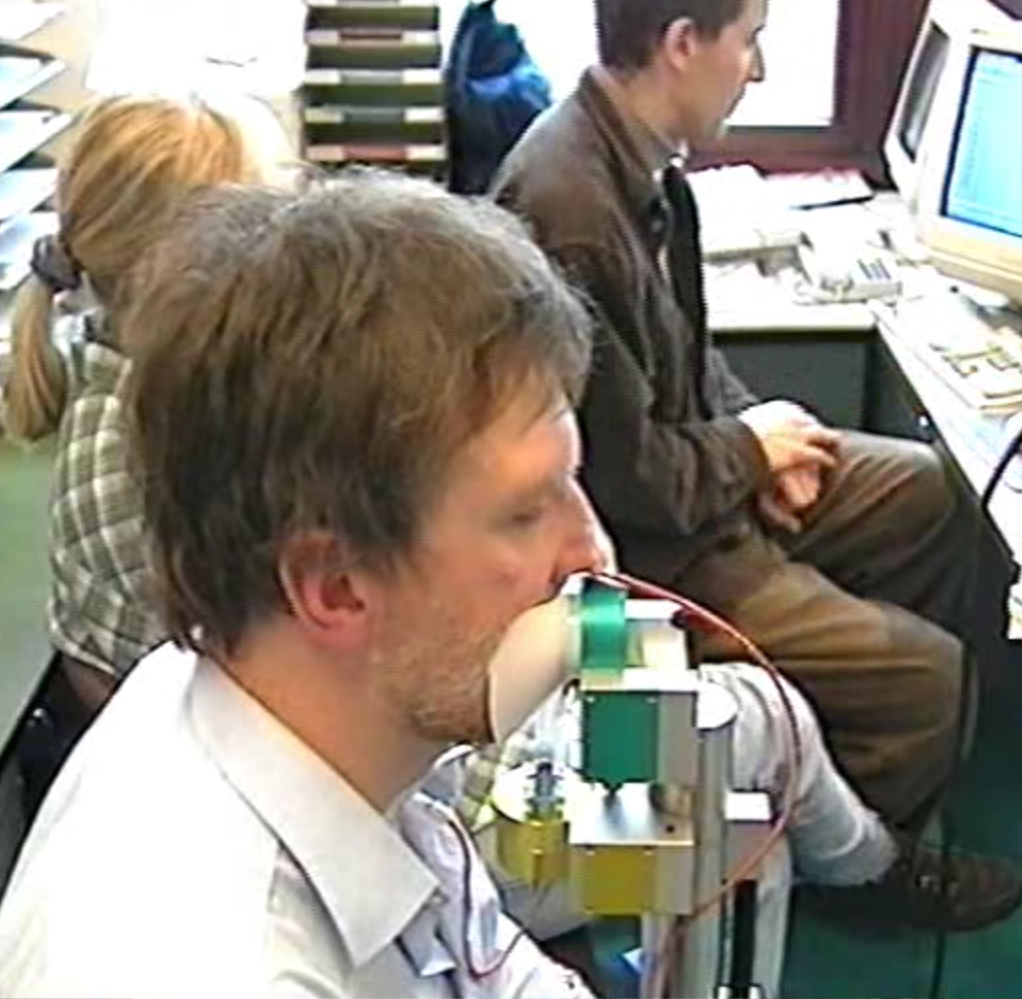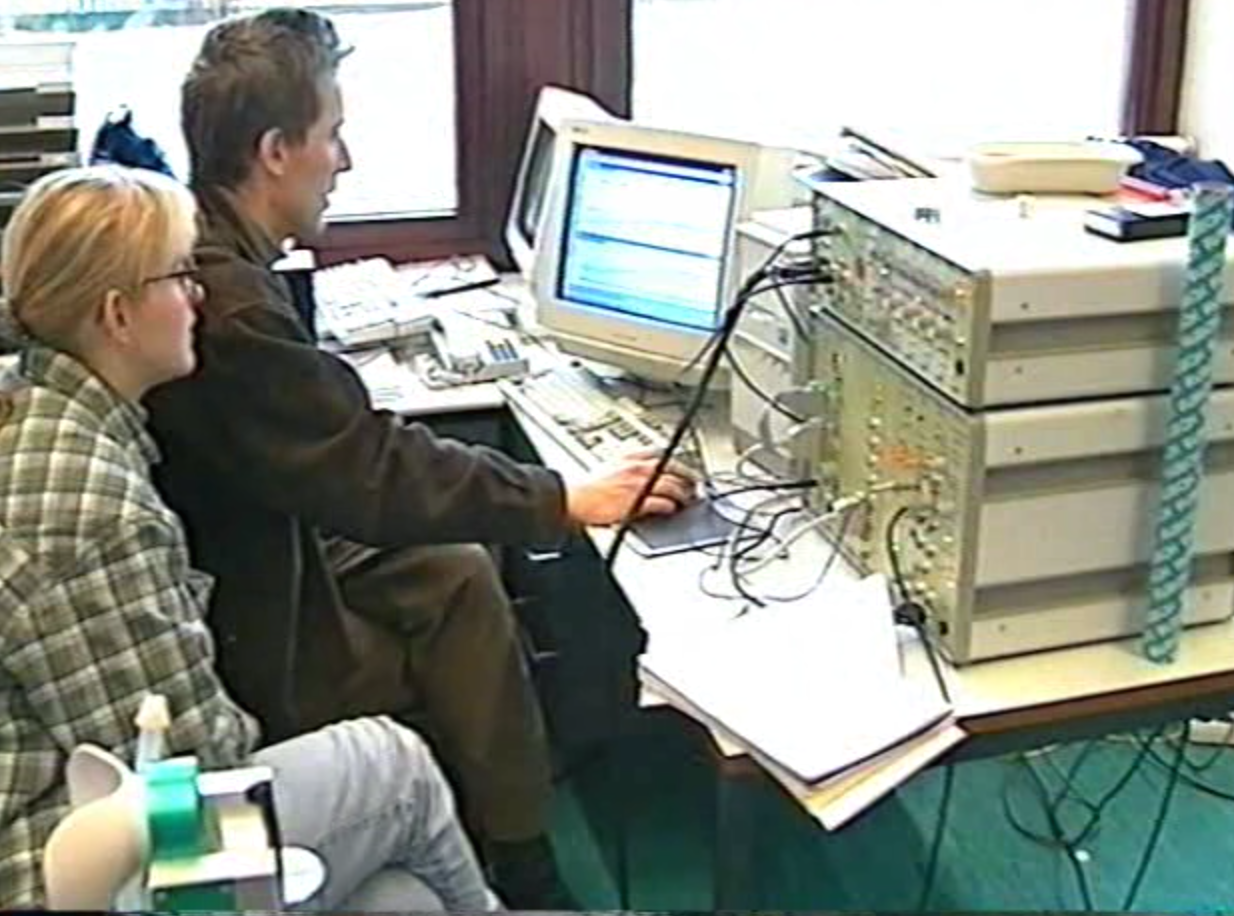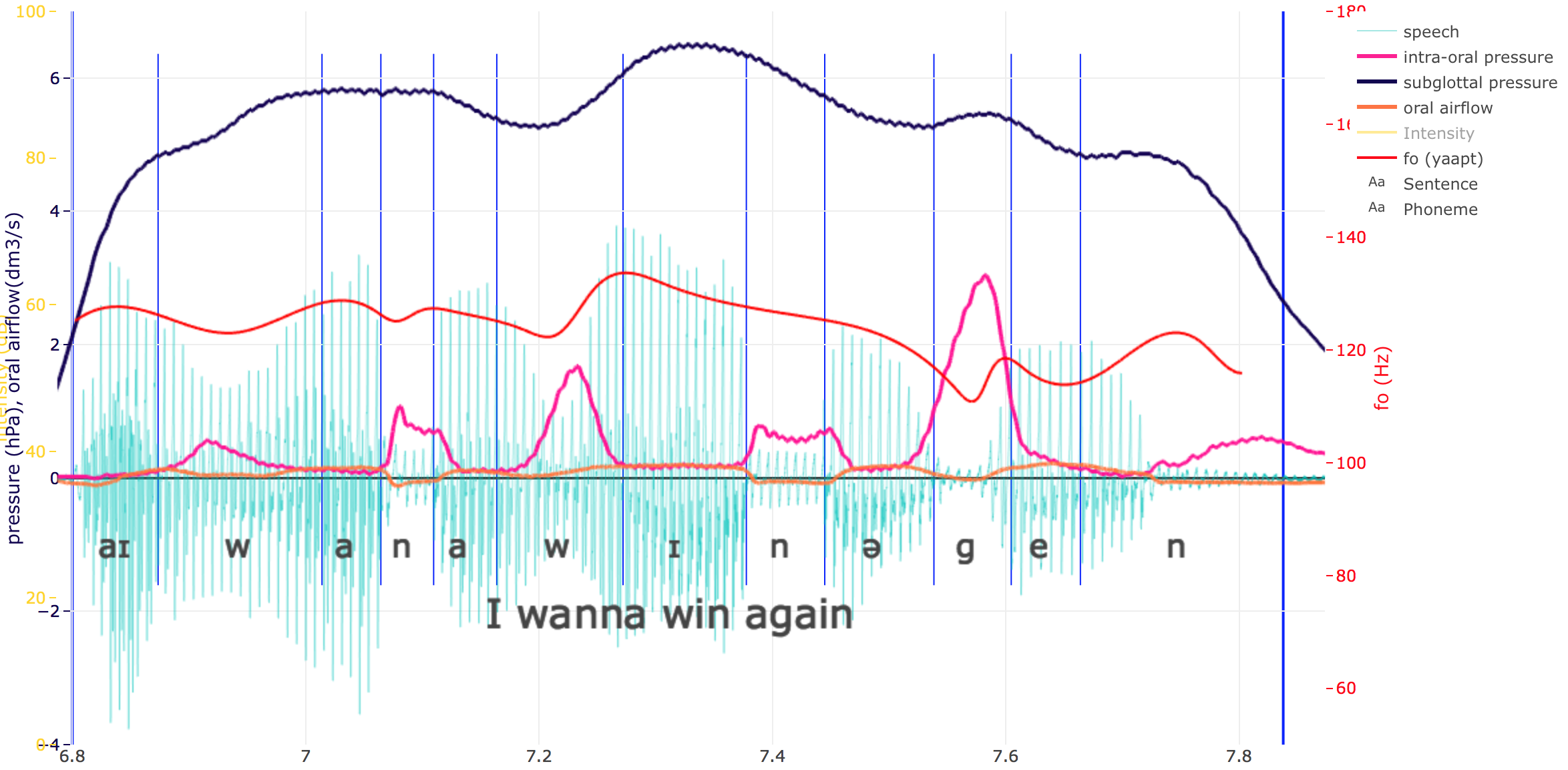SPEECH AERODYNAMICS DATABASE
Didier Demolin, Sergio Hassid, Clara Ponchard, Shi Yu & Roland Trouville
Laboratoire de phonétique et phonologie, CNRS-UMR 7018, Sorbonne-nouvelle, Paris 3.
ILPGA & Hôpital Erasme, Université Libre de Bruxelles
 |  |
| Pressure and flow transducers | The Physilogia workstation |
 |  |
| Pressure and flow transducers | Aerodynamic parameters of a sentence |
Generalities
This database was designed during an ARC project [1] ‘Dynamique des systèmes phonologiques’ in which the study of aerodynamic constraints on speech was an important goal. Data were recorded between 1996 and 1999 at the Hôpital Erasme of the Université libre Bruxelles. The goal was to obtain a substantial amount of data by simultaneously recording the audio signal, subglottal pressure, intraoral pressure, oral airflow and nasal airflow, in various contexts. Another aim was to obtain some reference values for female and male subjects producing different types of segments and sentences in French. Later 2 English and 1 Amharic speakers were added.
The equipment used for the recordings was the Physiologia workstation [2] designed by the Soremed that later became Sqlab [3] at the university d’Aix-en-Provence under, the supervision of the late Bernard Teston. Several versions of the software were used during the recordings but all are compatible with the Phonedit software that was used for the recordings. File format was :signal RIFF wsig ‘speech’; signal format: 16000 Hz | 12 bits Mono ; Aerodynamic files : signal format : 2000 Hz | 12 bits Mono.
Method
All data were gathered by a simultaneous and synchronized recording of the audio signal, intraoral and subglottal pressure as well as oral and nasal airflows. This was made for every language in the database. These parameters are not necessarily present in the recordings of each subject.
A small flexible plastic tube (ID 2mm) was inserted through the nasal cavity to the oropharynx, for the measurement of intraoral pressure. A needle (ID 2mm) was inserted in the last ring of the trachea for the measurement of subglottal pressure. The needle was placed after local anesthesia with 2% Xylocaine, including the subglottal mucosa. The tip of the needle was inserted, right under the cricoid cartilage. A plastic tube (ID 2mm) linked to a pressure transducer was connected to the needle. Oral airflow was measured with a flexible silicone rubber mouthpiece. Nasal airflow was measured through an olive inserted in one nostril. The olive was connected to a 0.5 cm plastic tube. The tubes and rubber mouthpiece were connected to a Physiologia workstation, consisting in a PC computer and an acquisition system equipped with various transducers and the signal editing and processing software Phonedit [see photos 1, 3] and the movie [5].
Pressure values are given in hPa (hecto Pascal). The Pascal (Pa) being the international unit for pressure measurements in physics. The use hPa also gives an easy correspondence to the cm H2O which was traditionally used in the speech sciences, 1 cm H2O = 1.2 hPa.
Data presented here were recoded with 7 native French voluntary subjects, 2 English (1 native American and 1 native English) subjects and 1 native Amharic subjects. The whole process was submitted and approved by the ethical committee of the Hôpital Erasme of the Université libre Bruxelles.
Use of the database
Data can freely be red by using one the sofwares (Shi, Phonedit, Winptich). The way to use the data for presentations or publications is done by quoting the following reference: Demolin, D., Hassid, S., Ponchard, C., Yu, S. & Trouville, R. (2019) Speech aerodynamics database, Laboratoire de phonétique et phonologie, CNRS-UMR 7018, Sorbonne-nouvelle, Paris 3, Ilpga. Downloading the data is also possible by going to HumaNum :https://doi.org/10.34847/nkl.bfdfot0f
References
UI: Digital Campus Paris (Cody Macedo, Hedi Noamane, Tumasgiu Rakotobe)
Récupérez l'archive complete sur nakala (DOI: 10.34847/nkl.bfdfot0f)